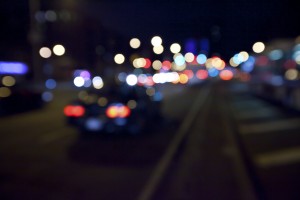West Virginia Traffic Safety – Avoiding Accidents at Night
It is a given that is harder to see in the dark than it is during the daytime. Of course, most people know that night driving is more dangerous as a result of reduced visibility. You may not know, however, how great the increase in accident risk is or what to do to stay safe. 
Our West Virginia injury attorneys know that you can see less at night, and that your depth perception and peripheral vision are both compromised by darkness as well. The National Safety Council (NSC) has also released information that is specific about some of the risks that night drivers face. NSC data indicates that drivers depend upon visual cues for around 90 percent of their decision-making when driving. With less visibility and more problems seeing what is going on around you, NSC indicates that the chances of becoming involved in an accident at night are three times greater than during the day.
How to Avoid a Night Driving Accident
Although it is more dangerous to drive at night, there are certain things that you can do to minimize your risk and stay safe. For example, NSC recommends:
- Regular cleaning of all lights and windows. This includes the inside and outside of the windows, as well as cleaning the head lights, tail lights and signal lights. When the lights and windows are clean, you’ll have a clearer view even at night.
- Proper alignment of headlights. Misaligned or out-of-place lights can blind other drivers and make it more challenging for you to see.
- Avoiding nicotine or smoking. The nicotine and carbon monoxide from cigarettes impairs night vision.
- Use of headlights whenever there is a potential need. It is always best to put them on even if they don’t make that much of a difference in your ability to see since the lights can help to ensure other drivers see you.
- Maintenance of a safe following distance. Driving slower and leaving more space in between you and other cars is advisable since darkness makes it harder to assess distances or to make an accurate guess as to how fast other cars are going.
- Driving within the area illuminated by the headlights on your vehicle. If you drive too fast, you can essentially drive out of the lights and find yourself with a blind spot.
- Using your low beams when there is other traffic around so you don’t blind other drivers, and looking at the edge of the road to guide your steering if you are blinded by the high beams of an approaching car.
By following these safety tips, you can hopefully reduce your risk of getting hurt in a night auto accident. Unfortunately, NSC warns that fatigued and drunk driving are both more likely to occur at night than during the day. If you encounter a drunk or sleeping driver, that person could cause an accident to occur no matter how careful you are. The drowsy or drunk driver would be obligated to pay for the costs of any accident he or she caused.
If you’ve been in an auto accident in Ohio, Pennsylvania or West Virginia, contact the personal injury attorneys at Recht Law Office. Call us today at 1-800-HURTLINE.






